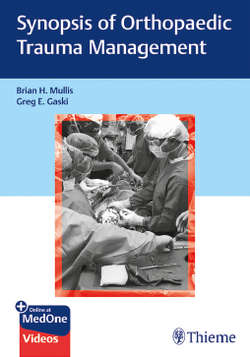Читать книгу Synopsis of Orthopaedic Trauma Management - Brian H. Mullis - Страница 34
V. Complications of Closed Treatment
ОглавлениеA. For select fractures treated nonoperatively, especially those requiring a cast, complication rates can be as high as seen with surgical intervention.
B. If an unacceptable degree of malalignment develops, it usually occurs early. Correction can be achieved with surgery or cast wedging in select cases.
C. Cast wedging can be used to improve alignment early in the treatment period.
1. Measuring the deformity with orthogonal films in the coronal and sagittal planes.
2. The cast is cut circumferentially leaving a hinge on the convexity of the deformity.
3. The cast is then distracted on the concave side and a spacer (cork, balsa wood, plastic) is inserted.
4. The size of the spacer can be approximated by the angle of deformity requiring correction (10 degree correction generally achieved with a 10-mm spacer).
5. The cast is overwrapped with plaster or cast material.
D. Casts and splints carry the risk of causing a pressure sore.
1. Typically occurs over a bony prominence.
2. Be particularly vigilant if the patient has an impaired level of consciousness, decreased peripheral sensation (e.g., diabetic neuropathy), or has poor nutrition.
3. The risk of pressure sores can be reduced by appropriately padding all areas at risk.
4. Counterintuitively, total-contact casts are used in high-risk patients with less padding that allow less friction and a lower risk of wound development; however, this should only be applied by an experienced professional and not attempted by someone inexperienced.
